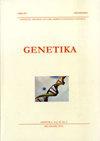ANTITUBERCULOSIS EFFECTIVENESS OF ENDOPHYTIC ANDALAS MUTANT BACTERIA PRODUCS INDUCED BY UV LIGHT WILL BE CONDUCTED
4区 农林科学
Q3 Agricultural and Biological Sciences
引用次数: 0
Abstract
Indonesia is the 3rd largest country in the world in cases of tuberculosis (TB) infection. Infections caused by the bacteria Mycobacterium Tuberculosis have claimed 100,000 lives per year. This death rate is expected to continue to increase due to resistance to Antituberculosis Drugs (OAT). One strategy to overcome the increasing number of resistance of M. tuberculosis bacteria to OAT is to find new and better antituberculosis active compounds. This study aims to determine the potential of Andalas Endophytic Bacteria mutated by UV light on antituberculosis activity. This research is descriptive research. The research was conducted at the Research Laboratory of the Faculty of Mathematics and Natural Sciences, Padang State University. The mutation process is carried out as a form of increasing the production of active compounds. Natural anti microbial compounds can be obtained through the fermentation process. The active compounds from the fermentation products were extracted using methanol and aquadest as solvents. Testing against M. tuberculosis using the Mycobacterium Growth Indicator Tube (MGIT) 960 System as a medium for sensitivity testing. The fermented supernatant with absolute concentration and extract of each solvent with a concentration of 75% were mixed into the MGIT 960 tube. The results showed that the length of time UV irradiation could reduce the number of endophytic bacterial cells of Andalas isolate ATB 10-6. UV light also causes changes in the morphology of mutant bacterial colonies. UV irradiation can produce mutant isolates that have better antifungal activity, where of the 8 mutant bacteria produced, 7 mutants have better antifungal activity than the wild type, and the growth of mutant bacteria is faster than the wild type.将对紫外线诱导的内生ANDALAS突变细菌产生的抗结核效果进行研究
印度尼西亚是世界上结核病感染病例第三大的国家。结核分枝杆菌引起的感染每年夺走10万人的生命。由于抗结核药物(OAT)的耐药性,这种死亡率预计将继续增加。克服结核分枝杆菌对OAT耐药性不断增加的一种策略是寻找新的、更好的抗结核活性化合物。本研究旨在确定紫外线诱变的Andalas内生细菌对抗结核活性的潜力。本研究为描述性研究。这项研究是在巴东州立大学数学与自然科学学院的研究实验室进行的。突变过程是作为增加活性化合物产量的一种形式进行的。天然的抗微生物化合物可以通过发酵过程获得。以甲醇和水溶液为溶剂提取发酵产物中的活性化合物。使用分枝杆菌生长指示管(MGIT)960系统作为灵敏度测试的介质进行抗结核分枝杆菌的测试。将具有绝对浓度的发酵上清液和具有75%浓度的每种溶剂的提取物混合到MGIT 960管中。结果表明,紫外线照射时间的长短可以减少安达仕菌株ATB10-6内生细菌的数量。紫外线也会导致突变菌落的形态发生变化。紫外线照射可以产生具有更好抗真菌活性的突变菌株,其中产生的8种突变细菌中,7种突变细菌具有比野生型更好的抗真菌活性,并且突变细菌的生长速度比野生型更快。
本文章由计算机程序翻译,如有差异,请以英文原文为准。
求助全文
约1分钟内获得全文
求助全文
来源期刊

Genetika-Belgrade
AGRONOMY-GENETICS & HEREDITY
CiteScore
1.80
自引率
0.00%
发文量
1
审稿时长
6-12 weeks
期刊介绍:
The GENETIKA is dedicated to genetic studies of all organisms including genetics of microorganisms, plant genetics, animal genetics, human genetics, molecular genetics, genomics, functional genomics, plant and animal breeding, population and evolutionary genetics, mutagenesis and genotoxicology and biotechnology.
 求助内容:
求助内容: 应助结果提醒方式:
应助结果提醒方式:


